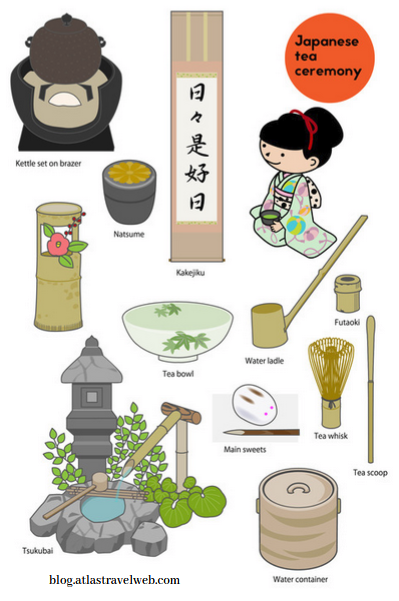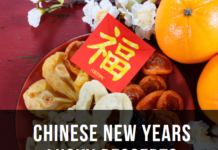Tea is one of the most widely consumed beverages in the world and over the centuries that it has been cultivated and consumed, elaborate tea ceremonies have evolved around brewing, serving, and consuming tea.
These are some of the famous tea traditions around the world.
China
The origin of tea dates back to ancient China, and the Chinese people have developed many elaborate tea traditions over the centuries. The Chinese tea ceremony Gong Fu incorporates the Confucian philosophies of balance and harmony and involves many steps. Some of the materials needed for the Gong Fu tea ceremony are a tureen, tea towels, tongs, a brewing tray, strainers, and a scent cup to smell the tea leaves before brewing. Oolong tea is typically used for the Gong Fu ceremony. Guests are encouraged to cradle the teacup in both hands, while slowly savoring the taste and aroma of the tea.
Japan
Tea was brought to Japan in the 9th century by Chinese monks. Japanese tea culture has evolved over the centuries to include elaborate rituals revolving around the preparation and consumption of tea. One of the most common tea traditions in Japan is the traditional chanoyu tea ceremony. The traditional Japanese tea ceremony of chanoyu incorporates the philosophies of Zen Buddhism, such as harmony, purity, tranquility, and respect. Japanese tea houses, called sukiya, are small and require the visitor to bow in humility and respect to enter the teahouse. The Chanoyu tea tradition uses ground green tea powder called matcha. Using carefully choreographed gestures and movements, the server whisks the matcha into hot water and serves the tea to the guest.
If there is a garden area, you might see a Tsukubai, which is a stone basin where they will ask you to purify your hands before entering the tea room. Once you enter the tea room, check to see if the walls are decorated with Kakejiku or Kakemono, which are hanging hand painted scrolls. All of the items needed for a tea ceremony are called Dogu, which translated means tools. Take note of the Natsume, which are hand crafted, air tight containers where the Matcha tea is stored. The iron kettle (Kama,) a whisk (Chasen,) tea scoop (Chashaku), ladel (Hishaku,) and tea bowl (Chawan,) are all part of the ceremony as well.

England
England is one of the main consumers of tea in the world. Tea drinking in England was introduced by the Dutch East India Company in the 17th century, but it wasn’t until the 19th century that the tradition of afternoon tea took off in the upper classes. The English tradition of afternoon tea is said to have been started by Ann, Duchess of Bedford, who craved a small meal in between lunch and dinner. The English afternoon tea tradition involves black tea with sugar and milk, served with small crustless sandwiches and scones.
Turkey
Tea, called Çay in Turkey, is drank around the clock, and it is customary to offer tea to a guest as a gesture of friendship, and for the guest to accept the offer. Tea is made in a double boiler called a Caydanlik. Boiling water is in the bottom pot, and the tea is brewed with water in the top pot. The strong tea is then poured through a strainer into small glasses and then topped off with the boiling water. Çay is served with sweet and savory biscuits and cakes, and Turkish tea gardens called Çay Bahceşi are a common sight in Turkey.
Morocco
Moroccan mint tea is green tea with fresh mint leaves that has been sweetened with sugar. Also known as Touareg tea, Moroccan mint tea is brewed and then poured from a height into three small glasses, each glass of tea getting stronger as it steeps. The three glasses symbolize the Maghrebi proverb that goes: “the first glass is as gentle as life. The second glass is as strong as love. The third glass is as bitter as death.” It is tradition in Morocco to serve tea with nuts and sweets.
India
Tea in India is a result of unsuccessful attempts to grow lucrative Chinese tea by British colonizers on the subcontinent. Fatefully, it was discovered that the Assam region of India is home to its own varieties of tea, and the rest is history. Today India is the world’s largest producer and consumer of tea. The Indian tea tradition is a spicy tea called chai. Chai is made from black tea, with the addition of cinnamon, cloves, cardamom, and fennel, as well as milk and sugar. Indian chai is sold everywhere in India by vendors called chai wallahs.
A big part of travel is learning about new cultures, customs & traditions. When it comes to holidays, we have shared information on New Years Traditions & Superstitions, St. Patrick’s Day traditions, Christmas Traditions to Start with your Teenager and Halloween Traditions Around the World. We have also written about lucky foods, super bowl traditions, wedding traditions and more. We invite you to browse blogs & hope you enjoy them.








